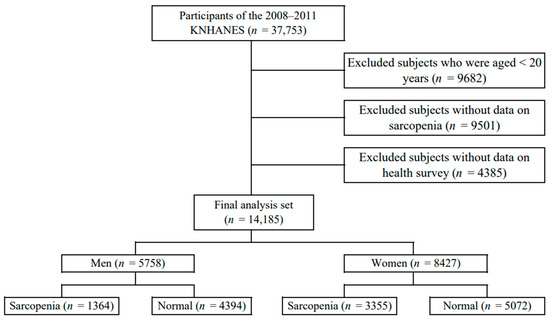Scoliosis, characterized by an abnormal lateral curvature of the spine, is predominantly idiopathic, underscoring the need to delve into its underlying causes for effective treatment and preventive strategies. This study investigates a potential correlation between scoliosis and Schmorl’s nodes (intervertebral disc herniations) influenced by Wolff’s law, which posits that bones adapt to external pressures. We analyzed CT scans from 108 juvenile decedents, including 56 with scoliosis and 52 without. After running multiple statistical tests, there was no significance between the mean bone density when compared to having scoliosis. An independent t-test provided a
t-value of 0.041, which, when compared to the original significance level of 0.05, is statistically significant, although weak. When compared to the Bonferroni correction level of 0.008, it throws out the significance to give a result of not being statistically significant. It was the same in the cases of L3 (
t = 0.103), L2 (
t = 0.084), and L1 (
t = 0.053). If compared to the regular significance level of 0.05, T12 (
t = 0.012) and T11 (
t = 0.042) had weak significance, but that was then excluded when the Bonferroni correction was applied. When looking at any significance of densities in different vertebral regions, the results from a one-way ANOVA (
p-value = 0.213) suggest that it is likely that the results are due to random variability or chance, and that there is no statistical significance. With a value of 0.273 from a Chi-squared (χ
2)/Fisher’s exact test, it suggests that there is no statistically significant correlation or difference between the variables of scoliosis and Schmorl’s nodes. The general pattern seems to follow that as the spine ascends, the density increases, and this is true in both scoliotic and non-scoliotic individuals. As a whole, it is evident that those with scoliosis have a lower vertebral density than those without, in all of the vertebral regions. There is, however, a weak negative linear relationship between bone density and age in both scoliotic and non-scoliotic individuals. A
p-value of −0.229 obtained from a Pearson correlation coefficient analysis in non-scoliotic individuals, as well as a
p-value of −0.069 in scoliotic individuals, was obtained. Overall, the findings of this study are comparable to some existing studies on similar topics, but there are few results that hold statistical significance and so this would be interesting to research further, potentially using a different dataset or a larger sample size that is more representative.
Full article
 IJMS
IMPACT
IJMS
IMPACT Applied Sciences
IMPACT
Applied Sciences
IMPACT Sustainability
IMPACT
Sustainability
IMPACT Sensors
IMPACT
Sensors
IMPACT JCM
IMPACT
JCM
IMPACT Materials
IMPACT
Materials
IMPACT Molecules
IMPACT
Molecules
IMPACT Energies
IMPACT
Energies
IMPACT Electronics
IMPACT
Electronics
IMPACT Remote Sensing
IMPACT
Remote Sensing
IMPACT Cancers
IMPACT
Cancers
IMPACT Nutrients
IMPACT
Nutrients
IMPACT Mathematics
IMPACT
Mathematics
IMPACT Foods
IMPACT
Foods
IMPACT Buildings
IMPACT
Buildings
IMPACT Polymers
IMPACT
Polymers
IMPACT Animals
IMPACT
Animals
IMPACT Water
IMPACT
Water
IMPACT Plants
IMPACT
Plants
IMPACT Agronomy
IMPACT
Agronomy
IMPACT Biomedicines
IMPACT
Biomedicines
IMPACT Processes
IMPACT
Processes
IMPACT Microorganisms
IMPACT
Microorganisms
IMPACT Diagnostics
IMPACT
Diagnostics
IMPACT Nanomaterials
IMPACT
Nanomaterials
IMPACT Viruses
IMPACT
Viruses
IMPACT Medicina
IMPACT
Medicina
IMPACT Healthcare
IMPACT
Healthcare
IMPACT Cells
IMPACT
Cells
IMPACT Forests
IMPACT
Forests
IMPACT Agriculture
IMPACT
Agriculture
IMPACT Land
IMPACT
Land
IMPACT JMSE
IMPACT
JMSE
IMPACT IJERPH
IJERPH
 Symmetry
IMPACT
Symmetry
IMPACT Genes
IMPACT
Genes
IMPACT Pharmaceutics
IMPACT
Pharmaceutics
IMPACT Coatings
IMPACT
Coatings
IMPACT Micromachines
IMPACT
Micromachines
IMPACT Pharmaceuticals
IMPACT
Pharmaceuticals
IMPACT Atmosphere
IMPACT
Atmosphere
IMPACT Children
IMPACT
Children
IMPACT Religions
IMPACT
Religions
IMPACT Antioxidants
IMPACT
Antioxidants
IMPACT Life
IMPACT
Life
IMPACT Metals
IMPACT
Metals
IMPACT Biomolecules
IMPACT
Biomolecules
IMPACT Vaccines
IMPACT
Vaccines
IMPACT Education Sciences
IMPACT
Education Sciences
IMPACT Minerals
IMPACT
Minerals
IMPACT Horticulturae
IMPACT
Horticulturae
IMPACT Brain Sciences
IMPACT
Brain Sciences
IMPACT JPM
IMPACT
JPM
IMPACT Bioengineering
IMPACT
Bioengineering
IMPACT




























